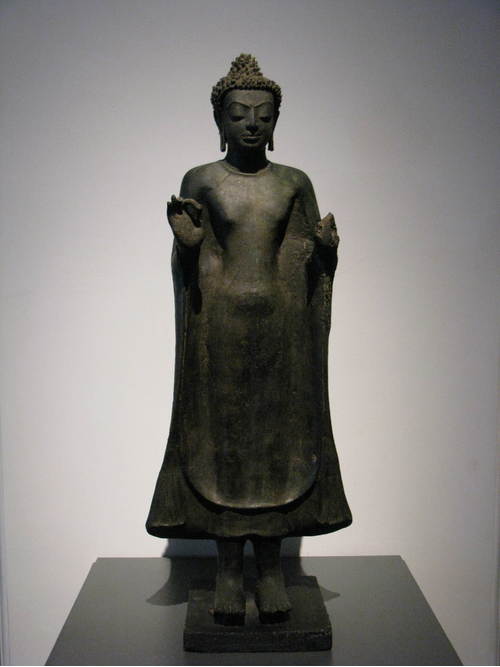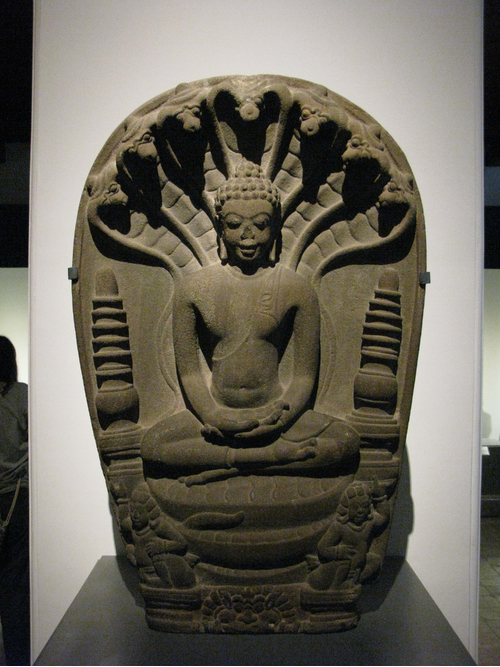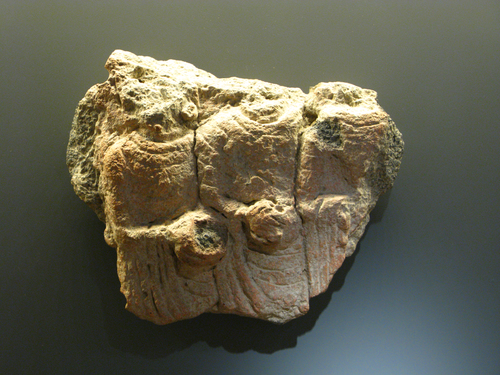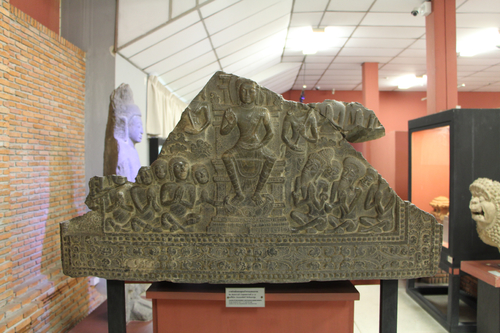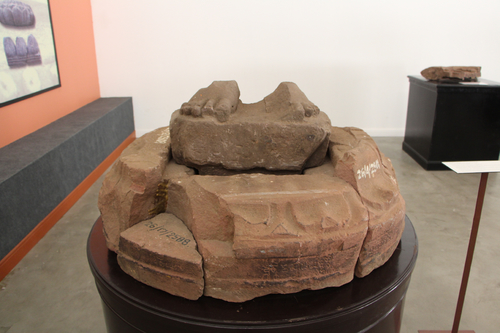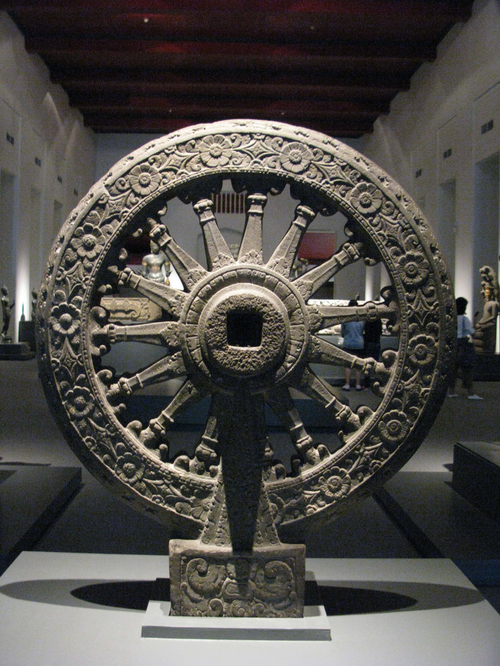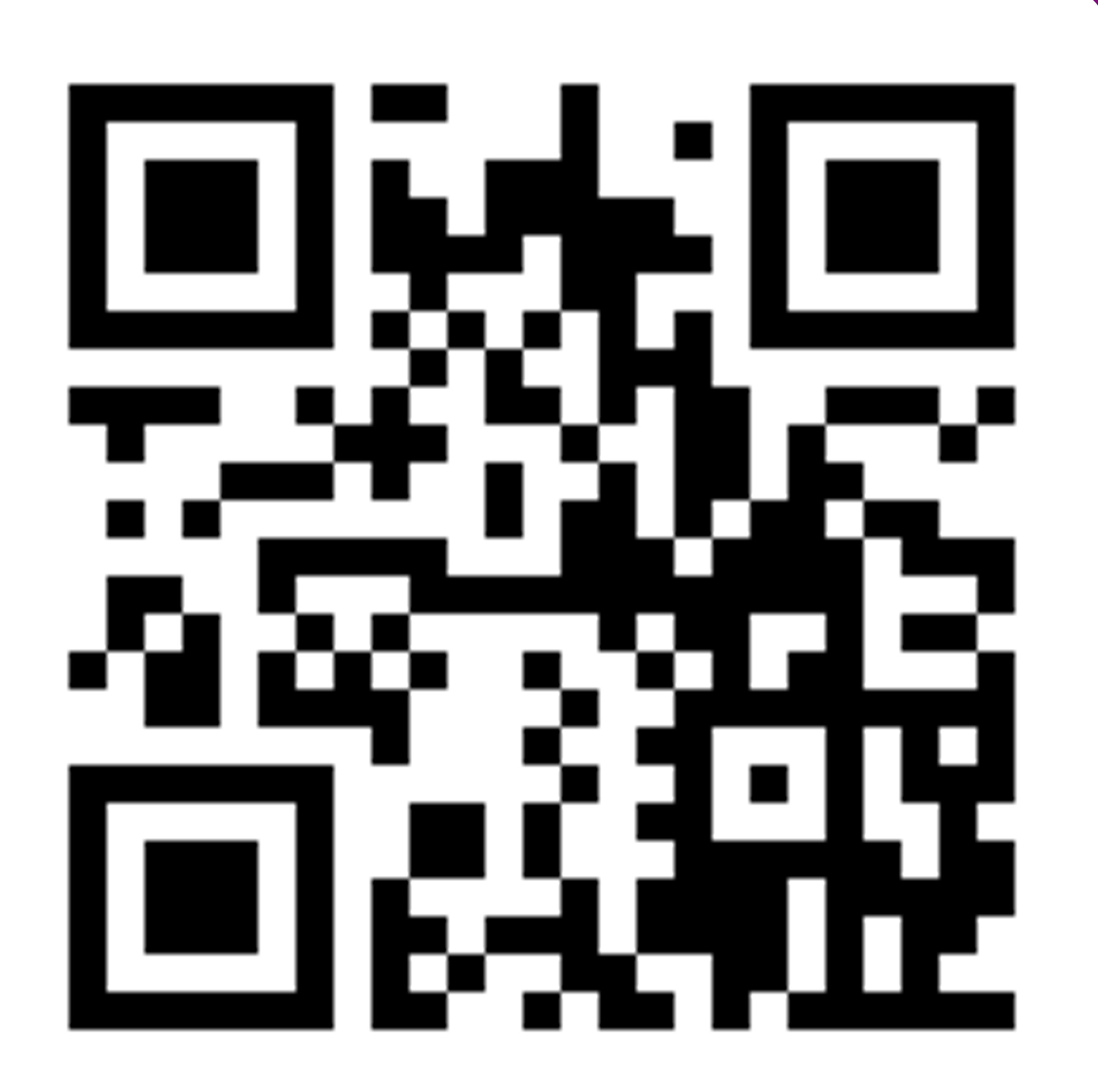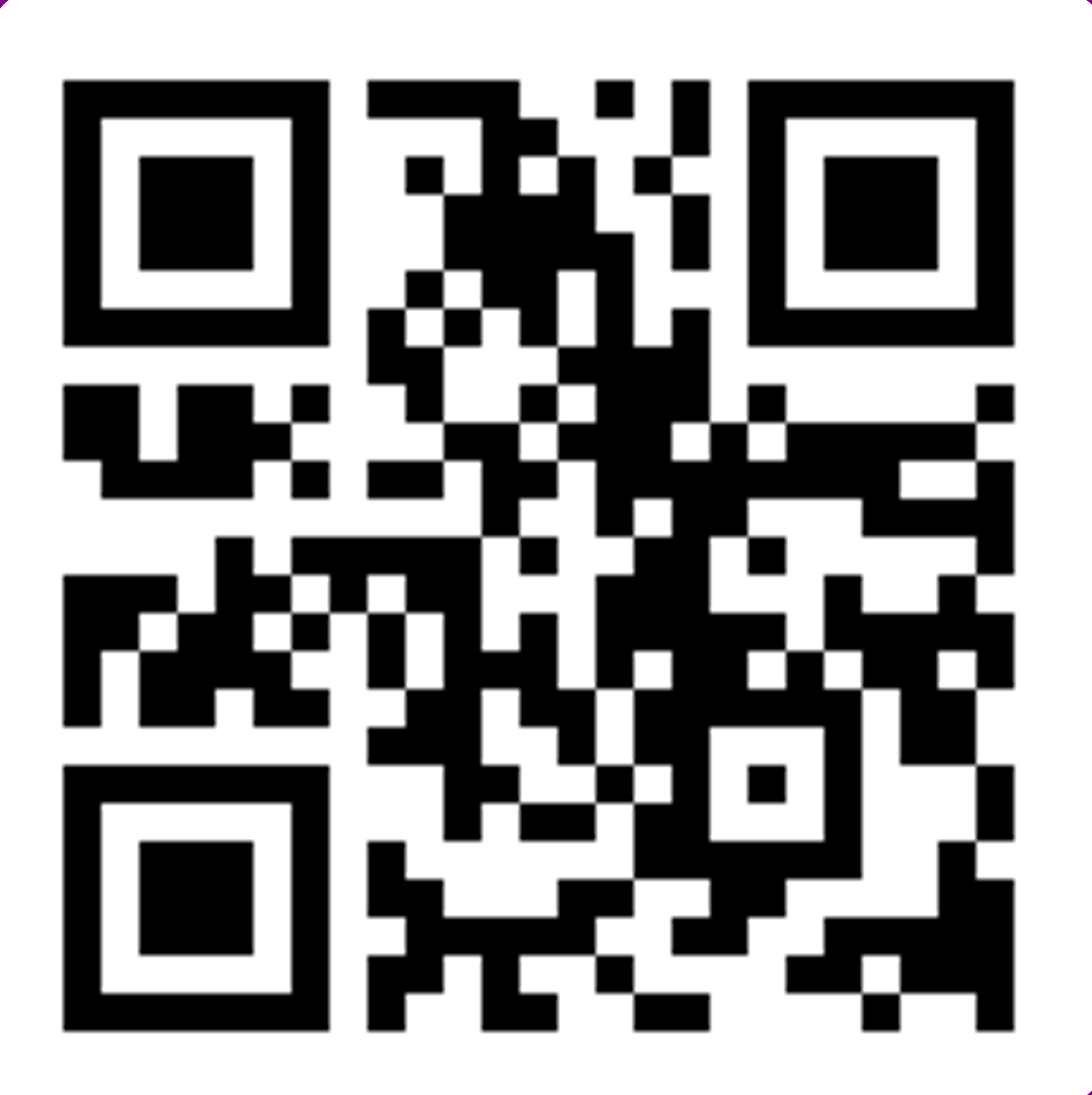Artwork Search
Arts in Southeast Asia Database
SculptureBuddha Image
The standing Buddha Image with his right hand in vitarkamudra or preaching gesture. Although the Buddha lost his left hand, but it’s likely that it is showing the same hand gesture. The Buddha is wearing a thin monastic robe covering his shoulders. The rounded hem of the outer robe is hanging down below the knee, while the undergarment hem is draped and flaring lower to his shins. Such monastic robe wearing style is commonly found amongst Buddha Images from the Northeast. The Buddha has a fairly square face with an Ūrṇā or a whorl of hair between the eyebrows and winged unibrow. His protuberant eyes are looking down towards the floor, and he has a large nose, large and protruding lips, and a cranial protuberance.
SculptureBuddha protected by the Naga
The high-relief Buddha Image under the naga is seated in meditation over the coiling up snake’s body. The Buddha is wearing a thin and plain monastic robe along his left arm while exposing his right shoulder with the hem of the uppergarment on his left shoulder. The Buddha is protected under the seven-headed naga. The face of the naga is a monkey lookalike, that is, a characteristic of nagas in the Dvaravati period. The Buddha is flanked by 2 cylindrical stupas, and 2 figures are sitting in front of the stupas. The base underneath the naga’s coiling up body is decorated with a lion head motif.
SculptureMonks holding alms bowls
This terra-cotta bas-relief used to decorate a stupa, but it is in badly damaged condition. The sculpture illustrates 3 Buddhist monks standing in a row, and each monk is wearing a monastic robe the shawl of which is covering their shoulders and arms and is holding an alms bowl at navel height.
SculptureBuddha Seated in the European Style
The Buddha seated in the European style is a bas-relief carved on the wall of the cave, and it was later gilded and painted in gold by contemporary people. The Buddha has a round face with a distinctive thin unibrow, protuberant eyes, a flattened nose, and protruding lips. These features are comparable with those of common Buddha Image in Dvaravati art. It’s noticeable that an aureole in the shape of an unopened lotus flower is above the cranial protuberance or Uṣṇīṣa. The Buddha is wearing a thin monastic robe along his left arm while exposing his right shoulder with the hem of the uppergarment on his left shoulder. The Buddha’s right hand is raised in the preaching gesture, while his left hand is placed on his lap.
SculptureConnecting block
The connecting block is utterly ruined. Made of stone, the connecting block is a square hunk of stone with a through hole in the middle and serves to connect the Dharmacakra to the pillar. The four sides of the block depict the First Sermon and are in s state of disrepair. Only one side gives details adequate for studying. The Buddha is seated in the European style on the throne, his right hand is showing preaching gesture, and his left hand is placed on the lap. Five Brahmins sitting below on the left hand side of the Buddha might possibly represent the Five Disciples before Buddhist ordination; while, on the right side, five Buddhist monks are sitting there, convincingly considered as the Five Disciples after entering monkhood. The figures right behind the Five Disciples on both sides could be deities and the Brahma devas.
SculptureBuddha Image
A few parts of the Buddha Image remain, namely the feet and the lotus base. The feet are on a rectangular sandstone block with a long tenon below, while the rounded lotus base bears the inscription upon its lower section. In the middle of the base is cut as a mortise hole fitting the feet piece.
SculptureHead of Buddha Image
The head of Buddha Image has a round face, broad forehead with connected eyebrows. The Buddha also has protuberant eyes looking down towards the floor; a huge nose; protruding lips; short and tight ringlet curls; and a Uṣṇīṣa shown as a cranial protuberance. There is a hole in the Uṣṇīṣa which possibly used to be decorated with an aureole made of gemstone or might be the space for enshrining Śarīra or relics of the Buddha.
SculptureDharmachakra
The Dharmacakra consists of 3 significant parts, that is, a hub in the middle, spokes the spaces between which were cut through and make it look thin, and the outer part of the Wheel which is a felloe was carved with round flower and lozenge patterns. The rim of the felloe was engraved with a decorative flame motif. The triangular lower part of the Wheel serves to bear its load and connects to a square base. Many parts of the Wheel bear Pali inscriptions using Pallava script which describe the Buddhist Doctrine, namely excerpts from Dhammacakkapavattana Sutta.
